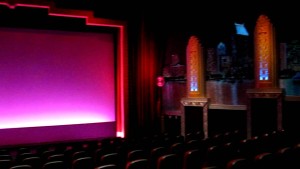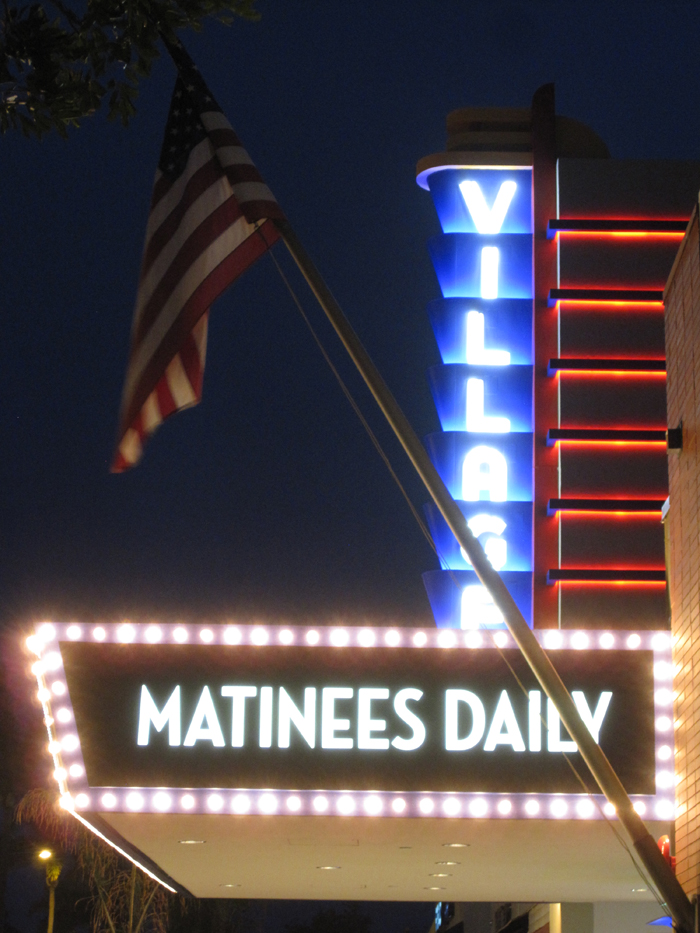Ahead of its celebration of film this November 9-12, the Coronado Island Film Festival celebrated the 70th anniversary of the Village Theatre with a red carpet screening of Back to the Future and a discussion of how the previously dilapidated theatre was revived.
The story was told by three people most responsible for the restoration – former Mayor Casey Tanaka, former City Manager Mark Ochenduszko and Lance Alspaugh, who owns the Village Theatre. What saved the theatre was a government-public-private partnership and a community that wanted a theatre of its own.

“If we can help it, we don’t like to go off the island. We’ll do it if we have to, if the movie’s really good we will drive there, but we don’t want to do that,” said former Mayor Casey Tanaka. To many residents it was not just about convenience, it was about memories. Something Ochenduszko first came to understand when Doug St. Denis told him about meeting her first date at the theatre and clutching a dime in her hand, not knowing for sure if he was going to pay. St. Denis is the founder and executive director of the Coronado Island Film Festival.
“What are you going to do about the theatre?” was a question council members heard more than once. People missed walking uptown to see a film or dropping off their kids for a Saturday matinee while they attended to weekend chores.
The community cared about the theatre, even if it wasn’t the most comfortable place to see a film. As a boy, Tanaka remembered that “when big movies came out, like Ghost Busters or Top Gun, lines would stretch all the way around the block.” He also recalled that “part of that experience was having your feet sticking to the gum on the floor, some of the chairs not being upholstered and getting a spring.”
As bad as things were when the theatre was open, it got even worse after it closed. A few years after it closed the owners gave Ochenduszko permission to go inside. “There was still popcorn on the floor. The building had not been cleaned. The soda fountains had not been cleaned. The bathrooms had not been cleaned. The light sconces on the walls had been removed and bare wiring was hanging out. You can imagine the critters running around inside,” he said.
The city turned to its redevelopment agency and came up with the $2.7 million to renovate the building (though redevelopment cities could use a portion of property tax money for redevelopment projects). The agencies were dissolved in 2010.
While the city could pay for a new theatre, it could not, and did not want to, manage a construction project, much less a movie theatre. “All we could be in charge of is writing that check,” Tanaka said.
So, even with money, and a talented, experienced partner, bringing the theatre back wasn’t easy. “There were a lot of complexities,” Ochenduszko said. “The building had multiple owners. None had a good relationship with the theatre owner.” But those leases were about to expire and that allowed the city to bring Alspaugh and his vision aboard. “The best thing that happened is that we found Lance Alspaugh.”
To build and run the theatre, the city brought in Alspaugh. Alspaugh brought in legendary theatre designer Joseph Musil. Together, they had renovated a number of small movie houses in Los Angeles, including the El Capitan in Hollywood and the Fine Arts in Westwood. “He [Musil] created the look you see inside the theater,” Alspaugh said. Musil died before the project was completed and Brian White and Ronald Wright took over. The team paid homage to Musil by adding his name to one of marquees depicted in one of murals in the main theatre. They were painted by Bill Anderson, whose murals can be seen at Disneylands across the globe, including Fantasyland in Anaheim.
Even though an Angelino, Alspaugh showed great sensitivity to his adopted community. Tanaka remembered that early on Alspaugh would call about movies to make sure they would be appropriate to show here. Tanaka was stunned. In his years in government service, no businessman had ever sought Tanaka’s opinion on a business matter. “He cares about community with action and not just with words.”
Village Theatre reopened on June 24, 2011, many years after Ochenduszko began his quest to save it. While it received kudos all around, some objected to the multi-theatre format. Alspaugh agreed. “A single screen restoration would have been a wonderful thing,” he said. Had it been economically feasible he would have done it. It wasn’t. Studios demand that a movie screen for three weeks. “If you only have one movie on an island of 25 thousand people, by week three there isn’t going to be anybody here,” he said.
Instead Alspaugh gave patrons “eye-candy and something uncommon that you are not going to see in very many places these days,” he said. Something uncommon indeed, a community with a movie house to call its own.
Village Theatre is the Host Theatre, and one of the many venues, for the Coronado Island Film Festival, November 9-12, 2017.
Related articles:







